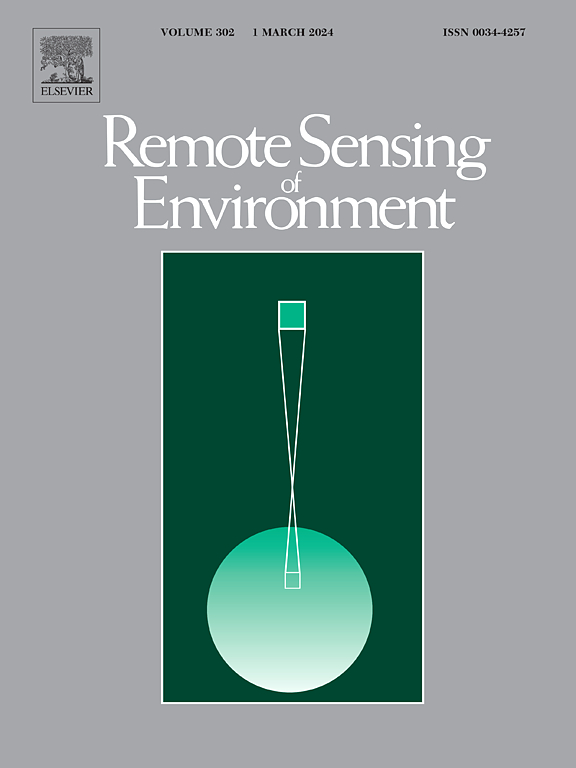Hydrological proxy derived from InSAR coherence in landslide characterization
IF 11.1
1区 地球科学
Q1 ENVIRONMENTAL SCIENCES
引用次数: 0
Abstract
Quantifying landslide susceptibility saves lives, especially in populous areas exposed to wet climates. However, available hydrological data sets such as precipitation and soil moisture are usually from reanalysis with a few to tens of kilometers' coarse resolution compared to the dimensions of landslides. Here we aim to seek substitutes to characterize hydrological features with finer spacing for landslide susceptibility assessment encompassing the tectonically active California. We synergize remote sensing big data and derivatives including topographic characteristics, vegetation index, hydrological variables, land cover, and geological units in different machine learning architectures. Our results illuminate that the interferometric coherence derived from synthetic aperture radar (SAR) can be an effective hydrological proxy, providing enhanced resolution by three orders of magnitude to tens of meters and presenting satisfactory performance, with recalls >85 % and AUCs >90 % in our landslide susceptibility models. The consequent spatially continuous landslide susceptibility map further demonstrates the effectiveness of high-resolution SAR products in compensating for limitations in traditional hydrological data sets. The map and our inferred relationship with the mélange and the distance to faults improve our ability in landslide hazard mitigation.
基于InSAR相干性的滑坡表征水文代理
量化滑坡易感性可以挽救生命,特别是在潮湿气候的人口稠密地区。然而,与滑坡的尺度相比,现有的水文数据集,如降水和土壤湿度,通常来自几公里到几十公里的粗分辨率的再分析。在这里,我们的目标是寻找替代品,以表征具有更细间距的水文特征,以进行包括构造活跃的加利福尼亚在内的滑坡易感性评估。我们在不同的机器学习架构中协同利用遥感大数据及其衍生工具,包括地形特征、植被指数、水文变量、土地覆盖和地质单元。我们的研究结果表明,合成孔径雷达(SAR)的干涉相干性可以作为一种有效的水文代理,提供了三个数量级到几十米的分辨率,并呈现出令人满意的性能,在我们的滑坡敏感性模型中,召回率和auc分别为85%和90%。由此产生的空间连续滑坡敏感性图进一步证明了高分辨率SAR产品在弥补传统水文数据集的局限性方面的有效性。这张地图以及我们推断出的与滑坡直径和断层距离的关系,提高了我们减轻滑坡危害的能力。
本文章由计算机程序翻译,如有差异,请以英文原文为准。
求助全文
约1分钟内获得全文
求助全文
来源期刊

Remote Sensing of Environment
环境科学-成像科学与照相技术
CiteScore
25.10
自引率
8.90%
发文量
455
审稿时长
53 days
期刊介绍:
Remote Sensing of Environment (RSE) serves the Earth observation community by disseminating results on the theory, science, applications, and technology that contribute to advancing the field of remote sensing. With a thoroughly interdisciplinary approach, RSE encompasses terrestrial, oceanic, and atmospheric sensing.
The journal emphasizes biophysical and quantitative approaches to remote sensing at local to global scales, covering a diverse range of applications and techniques.
RSE serves as a vital platform for the exchange of knowledge and advancements in the dynamic field of remote sensing.
 求助内容:
求助内容: 应助结果提醒方式:
应助结果提醒方式:


